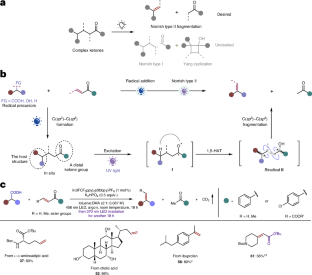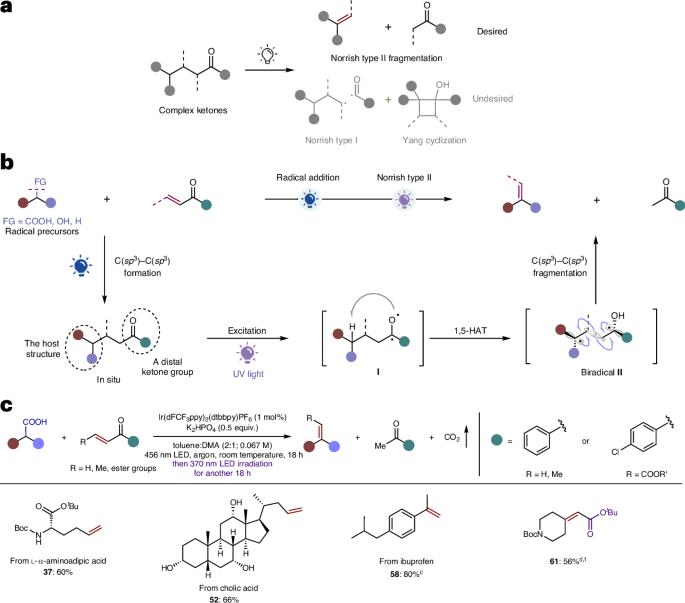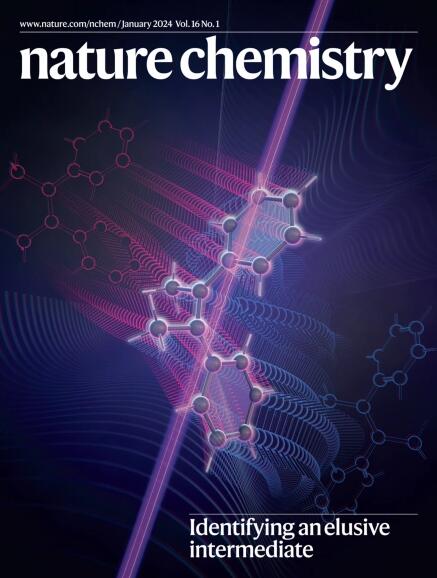从多种底物合成烯烃的综合光化学战略
IF 20.2
1区 化学
Q1 CHEMISTRY, MULTIDISCIPLINARY
引用次数: 0
摘要
尽管取得了一些进展,但由于羧酸、醇和烷烃的固有反应性不同,将它们直接转化为烯的通用烯化策略仍具有挑战性。现在,一种由 Giese 加成和 Norrish II 型破碎组成的单锅光化学方法可以按需从不同的底物中生产烯烃。本文章由计算机程序翻译,如有差异,请以英文原文为准。


Integrated photochemical strategy for alkene synthesis from diverse substrates
Despite advances, a general olefination strategy for the direct conversion of carboxylic acids, alcohols and alkanes into alkenes remains challenging owing to their inherent differences in reactivity. Now, a one-pot photochemical method comprising a Giese addition followed by a Norrish type-II fragmentation enables the on-demand production of alkenes from diverse substrates.
求助全文
通过发布文献求助,成功后即可免费获取论文全文。
去求助
来源期刊

Nature chemistry
化学-化学综合
CiteScore
29.60
自引率
1.40%
发文量
226
审稿时长
1.7 months
期刊介绍:
Nature Chemistry is a monthly journal that publishes groundbreaking and significant research in all areas of chemistry. It covers traditional subjects such as analytical, inorganic, organic, and physical chemistry, as well as a wide range of other topics including catalysis, computational and theoretical chemistry, and environmental chemistry.
The journal also features interdisciplinary research at the interface of chemistry with biology, materials science, nanotechnology, and physics. Manuscripts detailing such multidisciplinary work are encouraged, as long as the central theme pertains to chemistry.
Aside from primary research, Nature Chemistry publishes review articles, news and views, research highlights from other journals, commentaries, book reviews, correspondence, and analysis of the broader chemical landscape. It also addresses crucial issues related to education, funding, policy, intellectual property, and the societal impact of chemistry.
Nature Chemistry is dedicated to ensuring the highest standards of original research through a fair and rigorous review process. It offers authors maximum visibility for their papers, access to a broad readership, exceptional copy editing and production standards, rapid publication, and independence from academic societies and other vested interests.
Overall, Nature Chemistry aims to be the authoritative voice of the global chemical community.
 求助内容:
求助内容: 应助结果提醒方式:
应助结果提醒方式:


